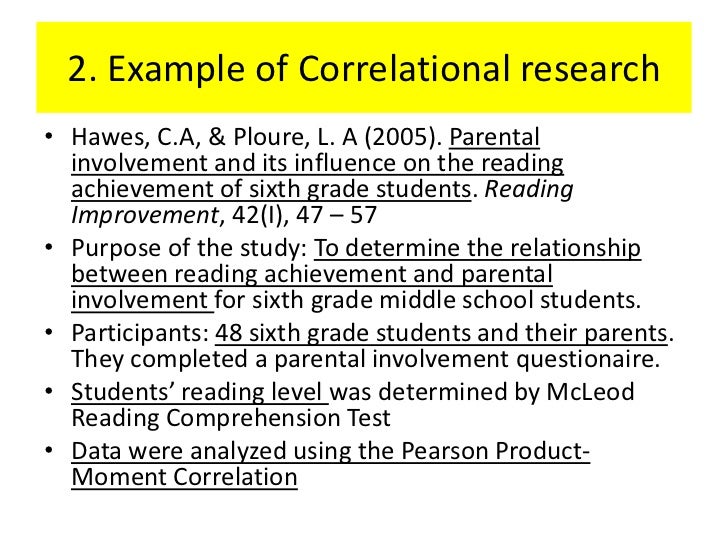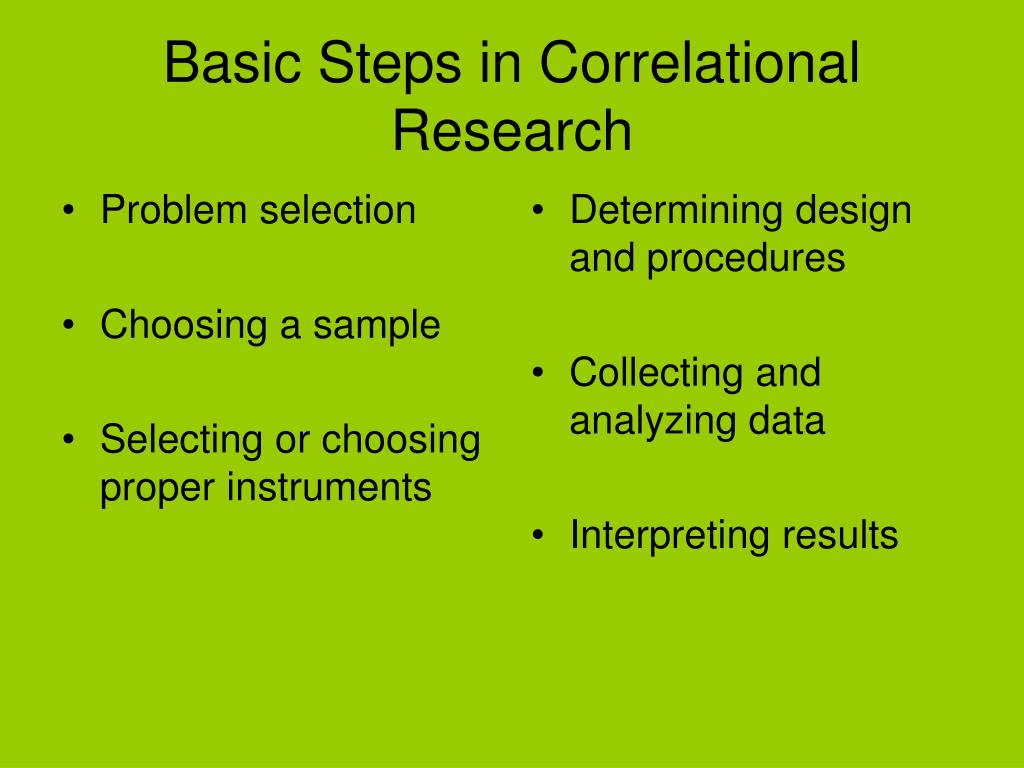Table Of Content

These would be properly explained under data collection methods in correlational research. This method is less expensive, saves time and provides the researcher with more disposable data to work with. However, it has the problem of data accuracy as important information may be missing from previous research since the researcher has no control over the data collection process.
Data Collection Methods
Researchers are expected to demonstrate the interrater reliability of their coding procedure by having multiple raters code the same behaviours independently and then showing that the different observers are in close agreement. They found that people in some countries walked reliably faster than people in other countries. For example, people in Canada and Sweden covered 60 feet in just under 13 seconds on average, while people in Brazil and Romania took close to 17 seconds.
Frequently asked questions about correlational research
It’s important to carefully choose and plan your methods to ensure the reliability and validity of your results. You should carefully select a representative sample so that your data reflects the population you’re interested in without bias. A correlation reflects the strength and/or direction of the relationship between two (or more) variables. Quasi-experimental research design is similar to experimental research design, but it lacks one or more of the features of a true experiment. This type of research design is used when it is not feasible or ethical to conduct a true experiment.
Correlations Between Quantitative Variables
Correlational studies, better known as observational studies in epidemiology, are used to examine event exposure, disease prevalence and risk factors in a population (Elwood, 2007). In eHealth, the exposure typically refers to the use of an eHealth system by a population of subjects in a given setting. These subjects may be patients, providers or organizations identified through a set of variables that are thought to differ in their measured values depending on whether or not the subjects were “exposed” to the eHealth system.
Correlational Research – Methods, Types and Examples
These concerns, also mentioned by Vandenbroucke and colleagues (2014) in their reporting guidelines for observational studies, are summarized below. By following these best practices and tips, you can conduct your correlational research with rigor, integrity, and confidence, leading to valuable insights and contributions to your field. Adhering to these ethical considerations ensures that correlational research is conducted responsibly and ethically, promoting trust and integrity in the scientific community. These studies provide valuable insights for organizations seeking to optimize their operations, improve employee engagement, and enhance customer satisfaction. The size and representativeness of the sample are critical considerations in correlational research. A small or non-representative sample may limit the generalizability of findings and increase the risk of sampling bias.

How to collect correlational data
Study finds correlation between air pollution, mental health disorders - UPI News
Study finds correlation between air pollution, mental health disorders.
Posted: Wed, 21 Aug 2019 07:00:00 GMT [source]
Correlation is also used to establish the reliability and validity of measurements. In psychology, correlational studies play a crucial role in understanding various aspects of human behavior, cognition, and mental health. Researchers use correlational methods to investigate relationships between psychological variables and identify factors that may contribute to or predict specific outcomes. For example, consider a correlational study that finds a positive relationship between the frequency of exercise and self-reported happiness.
Correlation Studies in Psychology Research
Ideally, the research design should be developed as early as possible in the research process, before any data is collected. This allows the researcher to carefully consider the research question, identify the most appropriate research methodology, and plan the data collection and analysis procedures in advance. By doing so, the research can be conducted in a more efficient and effective manner, and the results are more likely to be valid and reliable. It involves collecting data through surveys, questionnaires, interviews, and observations.
Examples of Correlational Research
Similarly, the statistical relationship between exercise and happiness could mean that some third variable, such as physical health, causes both of the others. Being physically healthy could cause people to exercise and cause them to be happier. Correlations that are a result of a third-variable are often referred to as spurious correlations.
Correlation and causation
A researcher could observe participants in a closed environment or a public setting. While correlational research can demonstrate a relationship between variables, it cannot prove that changing one variable will change another. In other words, correlational studies cannot prove cause-and-effect relationships. Controlled experiments establish causality, whereas correlational studies only show associations between variables.

In contrast, correlational studies typically have low internal validity because nothing is manipulated or control but they often have high external validity. Ever wondered how researchers explore connections between different factors without manipulating them? Correlational research offers a window into understanding the relationships between variables in the world around us. Whether you're a student delving into research methods or a seasoned researcher seeking to expand your methodological toolkit, this guide will equip you with the knowledge and skills to conduct and interpret correlational studies effectively. Understanding the distinction between correlation and causation is critical for interpreting research findings accurately and drawing valid conclusions about the relationships between variables.
Instead, the evaluator defines a set of variables including an outcome of interest then tests for hypothesized relations among these variables. The outcome is known as the dependent variable and the variables being tested for association are the independent variables. Correlational studies are similar to comparative studies in that they take on an objectivist view where the variables can be defined, measured and analyzed for the presence of hypothesized relations.
Naturalistic observation is an approach to data collection that involves observing people’s behaviour in the environment in which it typically occurs. Thus naturalistic observation is a type of field research (as opposed to a type of laboratory research). It could involve observing shoppers in a grocery store, children on a school playground, or psychiatric inpatients in their wards.
In contrast, correlational studies typically have low internal validity because nothing is manipulated or controlled but they often have high external validity. Since nothing is manipulated or controlled by the experimenter the results are more likely to reflect relationships that exist in the real world. As greater controls are added to experiments, internal validity is increased but often at the expense of external validity.
Kraut and Johnston, for example, video recorded a subset of their participants’ reactions and had two observers independently code them. The two observers showed that they agreed on the reactions that were exhibited 97% of the time, indicating good interrater reliability. The four items specific to study design relate to the reporting of participants, statistical methods, descriptive results and outcome data. In this chapter we describe the basic types of correlational studies seen in the eHealth literature and their methodological considerations. Archival information is the data that has been previously collected by doing similar kinds of research. When reviewing old research, little information might be available about who conducted the research, how a study was designed, who participated in the research, as well as how data was collected and interpreted.

No comments:
Post a Comment